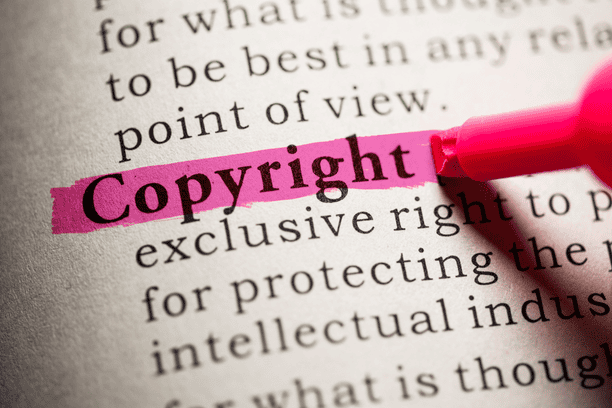Introduction
The article explores the thorny questions raised at large by the intersection between artificial intelligence and copyright, and by generative AI, in particular, to the extent that this much older idea of authorship is re-imagined thereby. In the current landscape of AI-composed literature, music, and visual arts, in which minimal human inputs are required, a fundamental question emerges: Can a machine be an author? This unique study simultaneously explores the dynamics of technological advancement with rigid statutory definitions and interrogates whether copyright laws, based on human creativity and moral rights, can ever contemplate non-human creations. The study discusses pertinent global jurisprudence, landmark cases, and theories pertinent to the challenges of establishing originality of works, assignment of ownership, and ensuring liability of AI-forged works. It also deliberates on the possibility of conferring a new legal identity upon AI or imposing stricter human-centric limits in the future. Ultimately, this study challenges consumers to look at authorship differently in a world where creativity is no longer the realm of men alone.
Redefining the Creator
In the past few years, artificial intelligence has risen from being a back-end software tool to becoming a front-end creator. Platforms such as ChatGPT generate the articles, Midjourney paints intricate visuals, and AIVA composes emotion-laden music, blurring the distinction between human imagination and machine execution. The fresh wave of these “robot authors” raises a serious question: If a machine creates something, who owns it, and is it even protectable by copyright? This article, then, presents one part of a very active ongoing debate wherein law finds itself unable to catch up with technology while we discuss the imperative need for legal innovation to redefine authorship.
Legal Landscape: Global and Indian Positions on AI and Copyright
India: The Indian Copyright Act, 1957[i], defines an “author” under Section 2(d) as a human—such as a writer, composer, or creator. Indian jurisprudence does not yet recognize AI-generated content as having legal authorship. However, recent discussions in legal academia and policymaking have begun to highlight the need for reform. The Delhi High Court in Swami Ramdev v. Facebook, Inc. (2019)[ii] indirectly touched upon intermediary liability in digital content, signaling how courts may soon confront AI-generated work. Moreover, the Copyright Office has not issued a specific policy on AI authorship, leaving this as a grey area.
In a notable instance, Raghav Artificial Intelligence Painting—an artwork created by AI—sparked debates in Indian legal circles over whether such creative output deserves protection. While the artwork was exhibited, its legal ownership remained contested, emphasizing the absence of legal clarity[iii].
The United States: The Copyright Office, and the courts have steadfastly rejected that claim of AI authorship. In Thaler v. Perlmutter[iv], the court ruled that works without human intervention were not copyrightable. The Copyright Office made it clear that only works with a sufficient measure of human authorship can be registered.
United Kingdom: The approach taken in the United Kingdom, under the Copyright, Designs, and Patents Act 1988[v]offered a practical compromise to this situation, making provision for computer-generated works and attributing authorship to that person making the “necessary arrangements.” This could thus recognize machine involvement and maintain attribution to humans.
China and Others: Chinese courts have been progressive in recognizing AI-generated content provided that human creativity was added to development or use. The European Union, on the other hand, is still deliberating but is poised to legislate for AI under broader AI Acts, instead of conferring legal personhood on it.[vi]
The post raises the Core Legal and Ethical Questions. They include:
a. Originality and Creativity
Originality is the very foundation of copyrighting. The common legal test would inquire as to whether the work was a result of “skill, labor, and judgment.” But what do we make of originality in the context of AI-generated work that is drawing simply from pre-fed datasets and algorithmic patterns?
b. Ownership and Authorship
If AI cannot hold copyright, who qualifies instead? The user inputting the prompt? The developer of the algorithm? Or is the organization footing the bill? Authorship confers real responsibilities with respect to licensing, royalties, and infringement.[vii][viii]
c. Liability and Accountability
Another area of uncertainty relates to the potential copyright infringement arising out of works generated by AI. What happens if AI inadvertently reproduces protected content? With no clear-cut assignment of responsibility or accountability for infringement, copyright owners have great difficulties in controlling their own rights.
d. Moral Rights
Moral rights include a right of attribution and a right to object to derogatory treatment. Since AI is not conscious and does not have any identity, ascribing moral rights seems philosophically dubious. But once something affects millions, it becomes less theoretical.
Key Cases and Real Life Examples
– Thaler vs. Copyright Office (US)[ix]: The application by Stephen Thaler to copyright a visual artwork produced by his machine of creativity, “Creativity Machine,” was denied on the grounds of non-fulfillment of the human authorship requirement.
– Zarya of the Dawn: A graphic novel that is developed by an AI tool for Midjourney was copyrighted to an extent. Only those parts that included a sizeable contribution of the humans were copyright-protected by the US Copyright Office.[x]
– DABUS Patent Cases: Although mainly patent-related matters, these cases before UK and EU courts concerned whether the AI known as DABUS could be named as an inventor. The conflicted judgments elaborate on the global confusion involving machine-generated IP.
– Raghav AI Art (India): While this is more a question than a formal case, the use of this AI-generated artwork spawned quite a discussion within India’s complex copyright battle, revealing a noticeable void in legal definitions today.[xi]
Ethical and Policy Considerations
Should machines be granted the status of authors for the purposes of law? On the positive side, granting rights to AIs might spur innovations, investments, and technological creativity. On the negative side, human work could be devalued, flooding the market with inexpensive content. On this side of the balance, the responsibility might transfer from living, breathing humans to faceless algorithms.
Some scholars favor a middle ground whereby rights are granted to human collaborators or some special category is created for AI-assisted works. Others suggest that there should be mandatory notifications whenever AI is working on a given project, particularly in cases of journalism, academic writing, or legal documents.
Rethinking Authors for the AI Age
The law ought to be reactive with the pace of reform but needs to run faster than the pace of AI innovation. Machines cannot feel; they do not think morally, but what they create has commenced to have certain effects on society in general.
In this light, it is imperative that someone who is human-an AI prompt engineer, an AI developer, or creative director-should remain paramount in authorship.
Some of the possibilities that need to be considered under such future legislation include:
- Specific mention of AI-based authorship.
- Granting copyright to the human controller or arranger.
- Setting out rules for determining liability for AI wrongdoing.
- Establishing new licensing models for works generated by AI.
- Amending Indian law, possibly by way of judicial interpretation or policy recommendation from the Ministry of Electronics and IT.
In the meantime, judges and lawmakers will have to tread this fine line that protects human creativity while allowing machine ingenuity to thrive.
Conclusion
The facts have changed; and like art, will the law again follow? Or, rather, will the law change in other ways? While we see maybe an artistic outlet formed by machines regarding interactivity, will machines be credited for creating? The question is not whether machines can create art but whether the law can keep pace.
Endnotes:
[i] Copyright Act 1957 (India)
[ii] Swami Ramdev v Facebook, Inc., (2019) SCC OnLine Del 10701 (Del HC).
[iii] S Baruah, ‘Can AI be an artist? The legal debate around Raghav’s AI-generated painting sparks a copyright conundrum’ The Hindu (2 August 2023) https://www.thehindu.com/sci-tech/technology/ai-art-raghav-india-copyright-debate/articleXXXXXXX.ece accessed 4 April 2025.
[iv] Thaler v Perlmutter No 1:22-cv-01564 (DDC 2023)
[v] Copyright, Designs and Patents Act 1988 (UK)
[vi] European Commission, ‘Proposal for a Regulation Laying Down Harmonised Rules on Artificial Intelligence (Artificial Intelligence Act)’ COM (2021) 206 final https://eur-lex.europa.eu/legal-content/EN/TXT/?uri=CELEX:52021PC0206
[vii] Pamela Samuelson, ‘Allocating Ownership Rights in Computer-Generated Works’ (1986) 47(4) U Pitt L Rev 1185
[viii] Jane C Ginsburg, ‘The Concept of Authorship in Comparative Copyright Law’ (2003) 52(4) DePaul L Rev 1063
[ix] Dr Stephen Thaler v Assistant Controller of Patents and Designs (India), Intellectual Property
Appellate Board (2021)
[x] US Copyright Office, ‘Zarya of the Dawn’, Case No 1-12295522281
[xi] https://www.managingip.com/article/2a5bqo2drurt0bxl7ab24/exclusive-india-recognises-ai-as-co-author-of-copyrighted-artwork


Leave a Reply